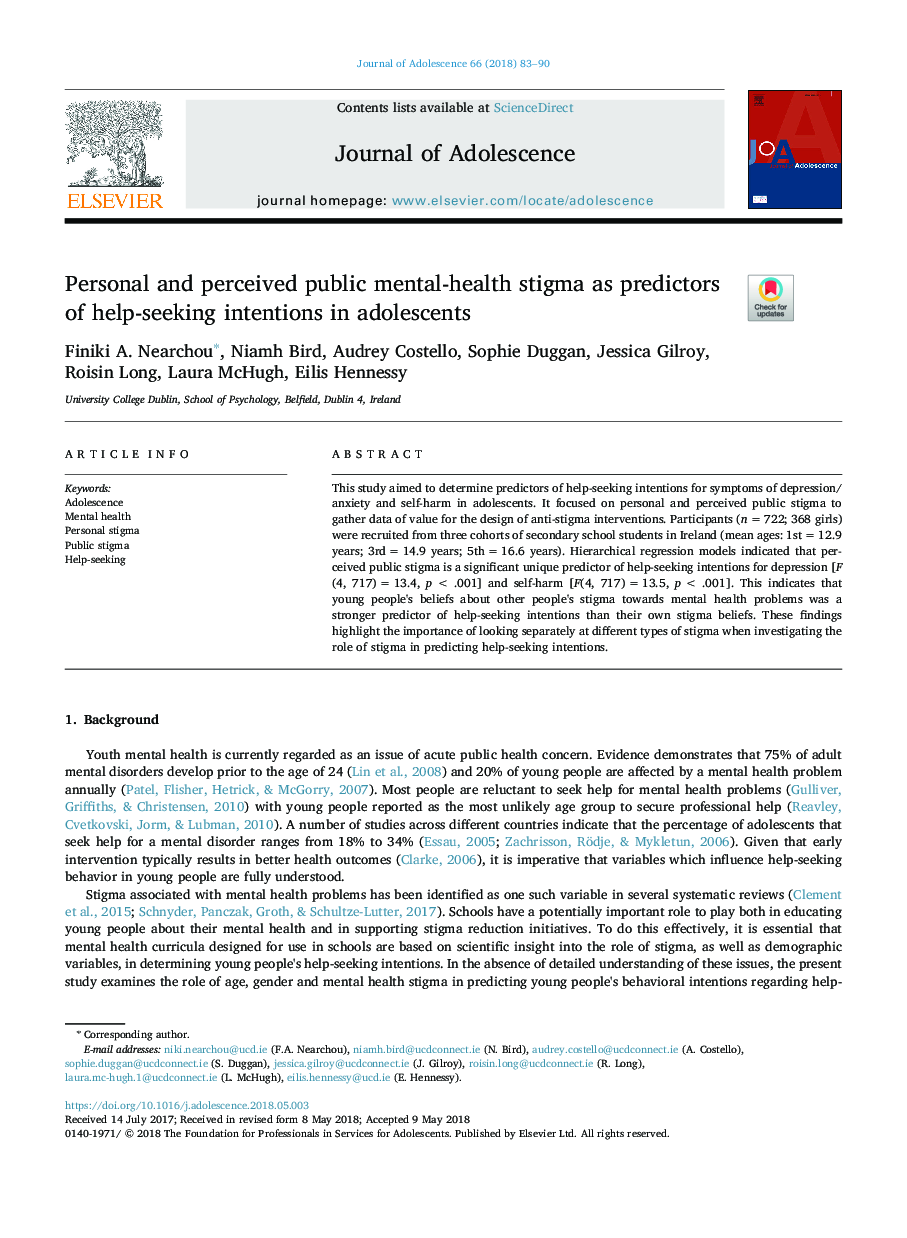| Article ID | Journal | Published Year | Pages | File Type |
|---|---|---|---|---|
| 7240794 | Journal of Adolescence | 2018 | 8 Pages |
Abstract
This study aimed to determine predictors of help-seeking intentions for symptoms of depression/anxiety and self-harm in adolescents. It focused on personal and perceived public stigma to gather data of value for the design of anti-stigma interventions. Participants (nâ¯=â¯722; 368 girls) were recruited from three cohorts of secondary school students in Ireland (mean ages: 1stâ¯=â¯12.9 years; 3rdâ¯=â¯14.9 years; 5thâ¯=â¯16.6 years). Hierarchical regression models indicated that perceived public stigma is a significant unique predictor of help-seeking intentions for depression [F(4, 717)â¯=â¯13.4, pâ¯<â¯.001] and self-harm [F(4, 717)â¯=â¯13.5, pâ¯<â¯.001]. This indicates that young people's beliefs about other people's stigma towards mental health problems was a stronger predictor of help-seeking intentions than their own stigma beliefs. These findings highlight the importance of looking separately at different types of stigma when investigating the role of stigma in predicting help-seeking intentions.
Related Topics
Health Sciences
Medicine and Dentistry
Public Health and Health Policy
Authors
Finiki A. Nearchou, Niamh Bird, Audrey Costello, Sophie Duggan, Jessica Gilroy, Roisin Long, Laura McHugh, Eilis Hennessy,
